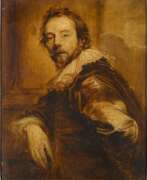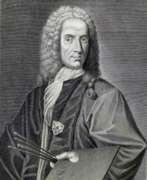Genre painters Tenebrism


Adam de Coster, born around 1586 in Mechelen and passing away in 1643 in Antwerp, was a renowned Flemish painter and a key figure among the Antwerp Caravaggisti. This group of artists was part of an international movement that interpreted Caravaggio's work in a personal manner, known for their genre scenes with strong chiaroscuro effects. De Coster was particularly celebrated for his nocturnal scenes, earning him the nickname "Pictor Noctium" (literal translation „Painter of Nights“) due to his preference for tenebrist scenes.
His works often depicted subjects similar to those found in Caravaggio's paintings, such as card sharps, fortune tellers, and musical performances, showcasing de Coster's fascination with the play of light and shadow. Notable pieces by de Coster include "Three Singers," which demonstrates his skill in rendering the texture of fabrics and the dramatic effects of light on his subjects, and "A Man Singing by Candlelight," capturing a moment's drama through meticulous lighting.
Adam de Coster's art continues to captivate audiences with its atmospheric intensity and meticulous attention to detail. His contributions have solidified his place in the history of Flemish painting, with works featured in prestigious collections, including the Liechtenstein Museum in Vienna and the National Gallery of Ireland.
For collectors and experts in art and antiques, Adam de Coster's masterpieces represent a fascinating intersection of Flemish tradition and Caravaggesque innovation. To stay informed about new discoveries, sales, and auction events related to Adam de Coster, consider signing up for updates from art galleries and auction houses. This will ensure you have access to the latest information and opportunities to appreciate the legacy of this luminous master of painting.


Antonio Zanchi, a distinguished Italian Baroque painter, was renowned for his dynamic and emotionally charged artworks, primarily active in Venice from 1631 to 1722. Born in Este, Antonio Zanchi's artistic journey began under the guidance of Giacomo Predali and later Francesco Ruschi, which led him to Venice where he was deeply influenced by Tintoretto and the Roman painter Francesco Ruschi. His artworks are celebrated for their dramatic realism and effective use of chiaroscuro, embodying the Baroque's intensity and passion.
Antonio Zanchi's portfolio spans a variety of subjects, including religious and mythological scenes, that showcase his robust style and attention to emotional depth. Noteworthy works include his depiction of the Plague of Venice and the ceiling painting of the Crowning of the Virgin Mary with St. Girolamo Miani in Venice's Patriarchal Seminary. His influence extended beyond his lifetime, with pupils like Francesco Trevisani and Antonio Molinari carrying on his artistic legacy.
For collectors and art enthusiasts, Antonio Zanchi's works offer a glimpse into the Venetian Baroque's rich tapestry, reflecting the era's artistic vigor and complexity. His paintings, found in various Italian cities and even in Bavaria, continue to be revered for their compelling narratives and artistic mastery.
For those interested in staying updated on Antonio Zanchi's works and related events, subscribing for updates can provide valuable insights into upcoming sales and exhibitions, ensuring enthusiasts remain connected to Zanchi's enduring artistic influence.

